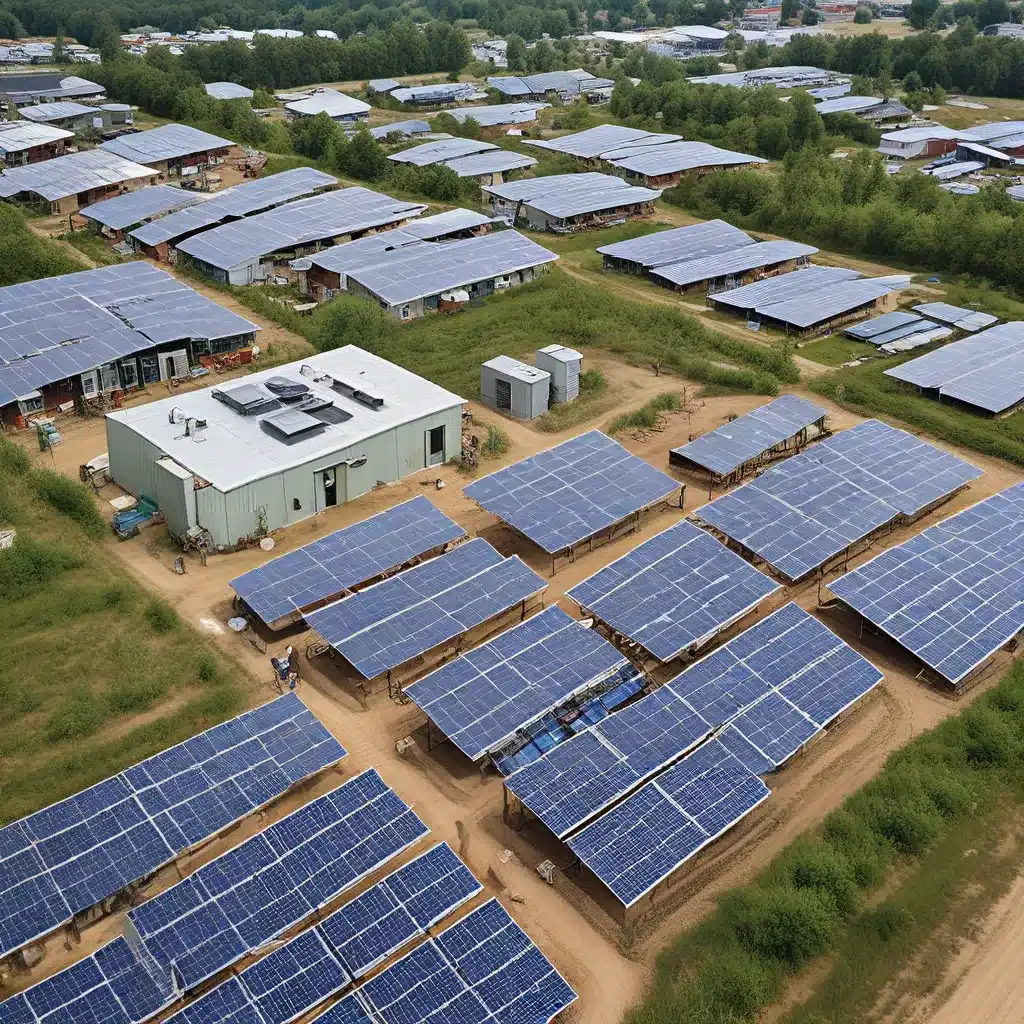
As someone passionate about renewable energy solutions, I’m thrilled to share with you an exciting new initiative that’s shaking up the clean energy landscape – the Community Renewable Energy Hubs. These innovative hubs are poised to revolutionize the way we approach local clean energy development, and I can’t wait to dive in and explore how they’re catalyzing vibrant clean energy ecosystems across the country.
Unlocking the Potential of Local Clean Energy
I’ll admit, when I first heard about the Community Renewable Energy Hubs, I was a bit skeptical. I mean, how much impact could these localized initiatives really have in the grand scheme of the global energy transition? But the more I dug into the details, the more I became convinced that these hubs are a gamechanger.
The Biden-Harris Administration’s announcement of the seven regional clean hydrogen hubs really caught my attention. The sheer scale of the investment – $7 billion in Bipartisan Infrastructure Law funding to catalyze more than $40 billion in private investment – is mind-boggling. But it’s not just about the money; it’s about the holistic approach these hubs are taking to build thriving clean energy ecosystems.
Fostering Partnerships and Community Engagement
One of the most exciting aspects of these Community Renewable Energy Hubs is the way they’re fostering cross-sector partnerships and deep community engagement. These hubs aren’t just about building new renewable energy infrastructure; they’re about creating ecosystems that bring together manufacturers, unions, local stakeholders, and underserved communities to ensure that the benefits of the clean energy transition are equitably distributed.
The Department of Energy’s MAKE IT Prize is a great example of how these hubs are catalyzing local clean energy manufacturing. By supporting the development of customized roadmaps and connecting manufacturers with regional assets and opportunities, these hubs are helping to build the foundation for vibrant clean energy manufacturing in communities across the country.
Prioritizing Community Needs and Equity
But it’s not just about the economic benefits – these hubs are also laser-focused on ensuring that the transition to clean energy benefits all members of the community, not just the privileged few. The Justice40 Initiative, which aims to direct 40% of the overall benefits of federal investments to disadvantaged communities, is a key part of the Community Renewable Energy Hubs’ approach.
The MAKE IT Prize Strategies Track is a great example of how these hubs are putting community priorities front and center. By engaging with local stakeholders and identifying unique regional assets and opportunities, these hubs are crafting customized roadmaps that address the specific needs and concerns of their communities.
Scaling Up to a National Hydrogen Economy
But the impact of these Community Renewable Energy Hubs extends far beyond individual communities. The Biden-Harris Administration’s vision is to use these hubs as the foundation for a national hydrogen economy – a interconnected network of clean hydrogen production, delivery, and end-use infrastructure that can help decarbonize hard-to-abate sectors like heavy industry and transportation.
The selected hydrogen hubs are expected to produce more than 3 million metric tons of clean hydrogen per year, which would be a major step towards the administration’s 2030 clean hydrogen production goal. And by catalyzing over $40 billion in private investment, these hubs are laying the groundwork for a thriving domestic clean energy manufacturing sector that can support the broader transition.
Harnessing the Power of Collaboration
What really excites me about these Community Renewable Energy Hubs, though, is the way they’re harnessing the power of collaboration to drive innovation and progress. By bringing together a diverse array of stakeholders – from unions and local communities to clean energy manufacturers and researchers – these hubs are fostering a rich exchange of ideas and a shared sense of purpose.
This collaborative approach is crucial, because the challenges we face in transitioning to a clean energy future are complex and multifaceted. No single entity, no matter how well-resourced or technologically advanced, can solve them on their own. It’s going to take a concerted, coordinated effort from all corners of society to make it happen.
The Future is Bright (and Clean)
As I reflect on the potential of these Community Renewable Energy Hubs, I can’t help but feel a sense of optimism and excitement about the future of clean energy in this country. These hubs are not just about building new infrastructure; they’re about building a new vision for how we power our communities and our economy – one that is sustainable, equitable, and prosperous for all.
Of course, there’s still a lot of work to be done, and the road ahead is sure to be filled with challenges and uncertainties. But with the strong support and leadership of the Biden-Harris Administration, coupled with the passion and ingenuity of the individuals and organizations involved in these hubs, I’m confident that we’re on the right track.
So, if you’re like me and you’re eager to be a part of this clean energy revolution, I encourage you to stay informed, get involved, and spread the word about the transformative potential of these Community Renewable Energy Hubs. The future of our planet and our communities depends on it.

